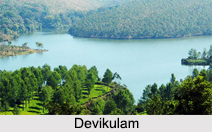 Hill stations of Kerala are concentrated on the Western Ghats. These hill stations are endowed with a variety of species of animals and birds and are bordered with Indian tropical rain forests. These hill stations experiences an influx of tourists especially during the summers. The hill stations of Kerala contain a wealth offorest resources including minerals, vegetation and wildlife. Munnar, Thekkady, Vagamon, Ponmudi, Lakkidi, Vythiri, Idukki, Peermedu, Malampuzha, Mattupetty, Ayyampuzha, Gavi, Athirappilly, Charalkunnu, Malayattoor, Kalpetta, Thiruvambadi, Malakkappara, Vithura and Ranipuram are the popular hill destinations which are easily accessible from Kerala, Tamil Nadu, Bengaluru, Thiruvananthapuram and Puducherry.
Hill stations of Kerala are concentrated on the Western Ghats. These hill stations are endowed with a variety of species of animals and birds and are bordered with Indian tropical rain forests. These hill stations experiences an influx of tourists especially during the summers. The hill stations of Kerala contain a wealth offorest resources including minerals, vegetation and wildlife. Munnar, Thekkady, Vagamon, Ponmudi, Lakkidi, Vythiri, Idukki, Peermedu, Malampuzha, Mattupetty, Ayyampuzha, Gavi, Athirappilly, Charalkunnu, Malayattoor, Kalpetta, Thiruvambadi, Malakkappara, Vithura and Ranipuram are the popular hill destinations which are easily accessible from Kerala, Tamil Nadu, Bengaluru, Thiruvananthapuram and Puducherry. 
Devikulam, Idukki District
Devikulam is a tiny hill station in Kerala located almost 16 km to the south western part of Munnar. The best time to visit Devikulam is during the months of September to May.
Idukki, Idukki District
Idukki is also known for its sanctuaries. Idukki is enriched with the major rivers which include Thalayar River, Periyar and Thodupuzhayar River. Idukki is named after the Idukku which is known as "narrow gorge" in the Malayalam language. Idukki is a veritable heaven of flora and fauna and is known for its spice and tea plantations.
Munnar, Idukki District
Munnar is serving as an exotic hill station from the British era.  Munnar is popular for the flower named Neelakurinji - a flower which blooms every 12 years and bathes the hills in a blue hue. Anamudi is known as the highest peak, which towers over 2695 m. It is an ideal spot for the enthusiastic mountaineer. Kurinjimala Sanctuary, Chinnar Wildlife Sanctuary, Indira Gandhi Wildlife Sanctuary of Coimbatore District (Tamil Nadu), Eravikulam National Park, Anamudi Shola National Park and Pampadum Shola National Park are the wildlife sanctuaries of South India bordered Munnar with the rich flora and fauna.
Munnar is popular for the flower named Neelakurinji - a flower which blooms every 12 years and bathes the hills in a blue hue. Anamudi is known as the highest peak, which towers over 2695 m. It is an ideal spot for the enthusiastic mountaineer. Kurinjimala Sanctuary, Chinnar Wildlife Sanctuary, Indira Gandhi Wildlife Sanctuary of Coimbatore District (Tamil Nadu), Eravikulam National Park, Anamudi Shola National Park and Pampadum Shola National Park are the wildlife sanctuaries of South India bordered Munnar with the rich flora and fauna.
Ponmudi, Thiruvananthapuram
Ponmudi is known for the trekking and hiking which attract a large number of tourists. Ponmudi is popular to the tourists for the presence of Ponmudi Hills, considered as the best place for trekking and camping during the late autumns and late winter seasons.
Vagamon, Kottayam-Idukki district
Vagamon is rested high amongst green tea plantations and babbling watercourses. The waterfalls and the deep rain forests are dominant. Vagamon also houses a wide variety of animals and birds. While taking a stroll one can come across elephants, which are seen busy fun and frolicking in water pools. It is easily accessible from Kottayam District and Idukki district.
Vythiri, Waynad District
Vythiri enthralls its tourists with the hills and the wet natural vegetation. Located at about 1300 feet above the sea level, Vythiri is rich in coffee and spice plantations. The ideal time to visit this place is from summer to winters.



















